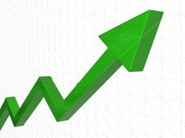Market Data

July 7, 2020
ISM: Manufacturing Grows in June
Written by Sandy Williams
The U.S. manufacturing sector is gaining strength after months of contraction, say supply executives surveyed in the June Manufacturing ISM Report on Business. The June PMI jumped 9.5 points to 52.6 indicating an expansion in the overall economy for a second straight month.
“June signifies manufacturing entering an expected expansion cycle after the disruption caused by the coronavirus (COVID-19) pandemic,” said Timothy Fiore, chairman of the Institute for Supply Management. “Comments from the panel were positive (1.3 positive comments for every one cautious comment), reversing the cautious trend which began in March. The manufacturing sector is reversing the heavy contraction of April, with the PMI increasing month-over-month at a rate not seen since August 1980, with several other indexes also posting gains not seen in modern times.”
The new orders index soared 24.6 points to 56.4 and production jumped 24.1 points to register 53.7 percent. The index for order backlogs remained in contraction but rose 7.1 points in June. Raw material inventories rose 0.1 point to 50.5 in June, while customer inventories contracted at a faster rate, falling to 44.6.
The pricing index jumped 10.5 points to register 51.3. Employment, at 42.1, eased its contraction rate by gaining 10 points. The supplier deliveries index fell 11.1 points to 56.9.
New export and import orders continued to contract but at a slower rate, registering 47.6 and 48.8, respectively.
“As predicted, the growth cycle has returned after three straight months of COVID-19 disruptions. Demand, consumption and inputs are reaching parity and are positioned for a demand-driven expansion cycle as we enter the second half of the year,” said Fiore.
Thirteen manufacturing industries reported growth in June, but Transportation Equipment, Primary Metals, Fabricated Metal Products and Machinery reported contraction.
Survey comments included:
- “We are seeing an increase in orders as the economy starts to get rolling again. Slow and steady, sales are increasing. So far, so good.” (Primary Metals)
- “Gradually ramping production back in our plants. Most of our supply base continued to operate during COVID-19, so we are not seeing a significant supply risk. Will be monitoring supply chain financial health closely.” (Transportation Equipment)
- “Thankfully, we are in quite a few industries, so impact wasn’t as harsh on us and more stable. However, during the last two weeks, our bookings have grown, and supply seems to be more readily available.” (Fabricated Metal Products)
- “Looks like May was the bottom in terms of orders. June is stronger, and our order books are rebuilding.” (Machinery)
- “Demand is down significantly due to COVID-19, but is starting to stabilize. We are hopeful for recovery in the second half of the year.” (Miscellaneous Manufacturing)
- “The building industry continues to defy expectations, as we continue to rebound stronger from the previous month. Being an essential business across most states and a surge in DIY projects has fueled the industry forward. While the industry will follow the greater economy, we do believe it will be more resilient than most due to potential migration from larger cities and an undersupplied housing market.” (Wood Products)
- “While we are seeing signs of an uptick in business activity, it is a slow recovery at this point.” (Chemical Products)
- “Market demand for refined products has increased as statewide quarantines have been lifted, but it is still below normal volumes.” (Petroleum & Coal Products)
- “Difficulty keeping up with a significant increase in demand related to COVID-19. Industry is up 62.5 percent versus a year ago. Supply challenges throughout the supply chain. Supply could be hindered if another wave of COVID-19 hits in the fall.” (Food, Beverage & Tobacco Products)
- “Orders have picked up and are trending toward normal production requirements [volume similar to 2019 production].” (Plastics & Rubber Products)







